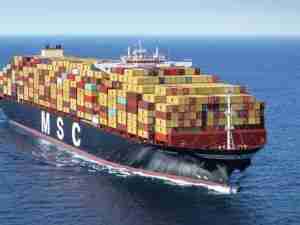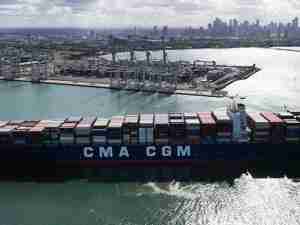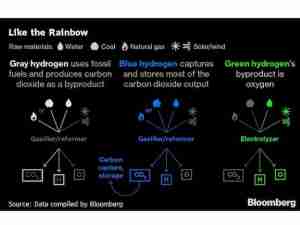Rising rates have resulted in a profit spike for many banks. As base rates increased, banks have raised the interest rate of their assets (your loans) more than their cost of funding (your deposits).
Shipowners’ response has been clear. As bank financing costs have increased and investment opportunities are limited, cash has been used to repay debt. As a result, not all banks have kept shipping portfolios at the same level. Many, needing to stop outflows, have been forced into lowering their pricing and offering new products.
First, banks’ outcomes from rising rates have varied widely. One year ago, we discussed Silicon Valley Bank and Credit Suisse; these were the downside cases, where certain banks experienced a sharp decrease in value of their assets (governmental bonds) and had uninsured depositors withdrawing their money fast.
However, many large banks have profited from increased spreads between rapidly increasing interest income across their portfolios and their slowly rising deposit funding costs. Banks aiming to increase the quality of assets supporting their portfolios are moving funds from more stressed asset classes to those with stronger cashflow generation potential. Meaning less real estate, where potential trouble is still looming, and more shipping.
For shipowners, this has been an excellent development. These banks have decreased their pricing to maintain and grow portfolio size.
These lower margins have three main causes. First, shipowners’ increased credit quality, as well as strong underlying markets, mean lower risk to the lenders. Second, banks reduce pricing to attract new clients and reverse the trend of loan prepayments. Third, the decreased margins remain profitable for these banks because interest rate paid to depositors has not risen as quickly as the interest rates which apply to the loans these banks provide.
Amongst the banks, a significant driver of portfolio development is their vessel age policy.
Several banks focus on newbuild vessels, often for environmental reasons. This results in lending to vessels which are less able to repay a large portion of their value quickly even in strong markets.
The shipowners, when flushed with cash, will typically choose to first repay the debt secured by the oldest vessels. This debt is normally the most expensive and it is prudent with regards to the vessels’ cash break evens. The fact that debt is currently expensive, as base rates are high, makes this easy to justify.
How can a bank make sure that its portfolio grows or keeps its size in this competitive market, outside of lowering margins and cutting into profitability? One method is offering new products, more suitable for the current interest rate environment. Some, such as non-recourse senior-secured revolvers (revolving capital facilities), are tried-and-tested. Others, such as non-recourse construction finance, revisit an earlier time!
Erlend Sommerfelt Hauge, Managing Partner at oceanis, comments: “The non-recourse revolvers are very helpful for owners that want to be ready once the opportunities arise. You avoid paying the full interest rate on funds you have easily available, saving the time of getting approval once the investment opportunity is presented”
Otherwise, take note of the projected downturn in SOFR rates. Markets show a decrease in SOFR from Spring 2024, falling to the low 3% region over 1 year. Right now, it is possible to lock in low margins while expecting the total interest rate to decrease quickly. Obtaining an interest rate swap can also decrease near-term interest costs, reducing the effective SOFR rate paid in Q2 2024 from around 5.25% to around 3.5%.
Historically low margins remain available for shipowners taking on debt. It is an owner’s market; in the future, it may not be.
Erlend Sommerfelt Hauge ends by saying: “Overall, we see downside risk to the shipping loan margins going forward. The environment of rapidly increasing base rates, which has been very beneficial for selected banks, is coming off. Also, there are some other clouds on the horizon for banks, in the US, the liquidity support - Bank Term Funding Program - has just ended and there is the implementation of Basel IV”
Dry Bulk
The past three months have seen small but notable changes; while the overall picture is ‘more of the same’, some key trends have emerged which will continue to develop over the coming quarters.
Earnings are now ‘ok-to-good’ from Handysize to Capesize, though Capesizes are the largest positive outlier of the bunch. These vessels are seeing renewed interest from Chinese steelmakers, whose reserves of iron ore have reached lows not seen in several years. For smaller tonnage, Houthi attacks in the red sea have had a small impact with the main driver here being a resurgence in demand across the Pacific.
Higher leverage options for newer vessels, and particularly for newbuilds, continue to improve in their attractiveness. Chinese lessors are continuing to improve their offering and make clear the differences between themselves and European lenders. Not only are the commercial terms offered generally superior in margins, loan-to-value and other commercial items but their response times and willingness to do business make them a pleasant counterparty to deal with.
At the other end of the spectrum, older vessels seeking lower leverage are also enjoying a slow decrease in interest costs. European banks are becoming more confident in vessels’ ongoing ability to repay financing quickly and this is making the sector much more attractive for relationship managers and credit committees alike. This is a vast improvement from the late summer of 2023 when bankers were advising that financing Dry Bulk would be difficult in almost any situation.
Tankers
Movements in Tanker financing have also been minimal over the past three months as financiers have taken a pause from the previous race to see who can offer the lowest pricing.
Continuing high earnings, especially for Aframax and LR2 vessels, have continued to provide financiers with confidence that today’s high fair market values are well compensated for by the cash generation capacity of these vessels. However, the longest-term charters of 3 years or more struggle to provide rates sufficient for high leverage on younger vessels; for shipowners and financiers alike, it is clear that the most money is to be made in the spot market in the near future.
Similar to the container financing markets of mid-2022, almost all refinancings have now been completed in the sector with new loans only being requested for acquisitions and newbuilds. As acquisitions are now more commonly made by middle eastern buyers which often invest only with equity, the number of debt transactions in the sector has fallen.
Despite this decrease in transaction rates, several points are clear: first, pricing is at around the same levels as at the end of 2023 with no large changes seen for the most vanilla of transactions.
There has been a split in the opinions of higher-cost financiers on whether the tanker bull market is here to stay. Some lenders, which invest both equity and debt in the sector, are becoming very confident in future asset values and can offer high leverage at competitive pricing. Others, whose backers see the tanker market as being at a peak and potentially declining from here, are finding it more difficult to lend at these levels. These more cautious lenders are maintaining pricing levels while slowly reducing the leverage available and requiring multiple vessels per facility to diversify earnings sources.









